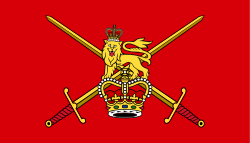This article needs additional citations for verification .(November 2020) |
 |
| British Army lists |
|---|
| French Revolutionary and Napoleonic Wars |
| Victorian era |
| First World War |
| Second World War |
| Regiments |
| Officers |
| Other |
This is a list of British Army commands and army groups . It is intended as a central point of access information about British formations of that size. It does not cover formations of the British Indian Army.
Contents
In 1905, the army established a series of geographical military districts, known as "commands", to replace six army corps that had existed for a short period. Among the new commands was Aldershot Command. The purpose of the commands was to administer all units and formations located within their geographical borders, and if needed could be further subdivided into "areas". In 1939, it was one of the army's six regional commands, which existed within the British Isles, on the outbreak of the Second World War. [1] [2] Its geographical area encompassed parts of the following four counties: Berkshire, Hampshire, Surrey, and Sussex. [3]
Commands were placed under the control of a general officer commanding who was assisted by an assortment of staff officers, which were subdivided between the General Staff, the Adjutant-General, the Quartermaster-General, as well as the Royal Artillery, Royal Engineers, Royal Corps of Signals, Royal Army Medical Corps, and various other regiments and corps.